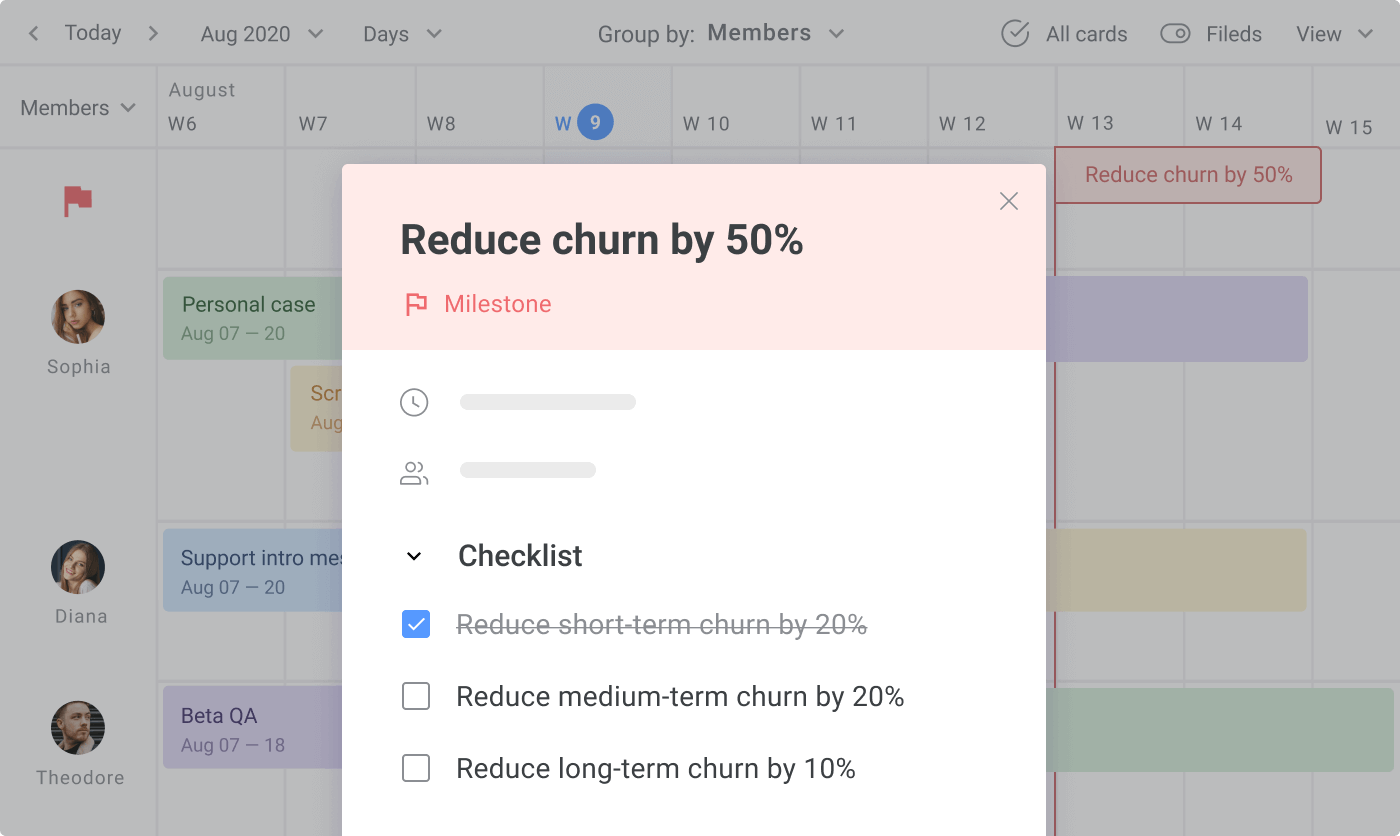Project Manager’s Quickstarter
What are Project Objectives and How to Write Them, with Examples
The only way to move forward in the right direction and measure work results against expectations is to clearly define goals and objectives before you go.
What are project goals and objectives?
Even though some teams might use these words interchangeably, you have to know that there is a distinct difference between project objectives and project goals. Goals describe where owners want their companies to go, while objectives define how to get there. Project goals are more high-level. They should outline what happens once your project is successful, and how it aligns with the overall business strategy.
Meanwhile, objectives are what you plan to achieve by the end of your project including deliverables, assets, or things like increasing productivity, motivation, etc. They should be measurable so that it’s easy to understand whether they are achieved or not. Objectives are much more detailed and specific than goals.

Why are objectives important?
Project objectives are your main guidelines throughout its lifespan. They provide structure and clarity of expectations for a team member, manager, and leadership. Also, they help you move from where you are now to where you want to be and link high-level goals with real actions. That’s why it’s important to set your objectives right, so they bring maximum value.
How to set project objectives
1. Set before you start
Objectives should guide you from the early beginning and serve as a foundation for any project. They form a plan of action and tell you why you do what you do. Once your objectives are approved, they become an agreement between a project manager, top management, and all stakeholders on how the project should move on. That’s the reason why you have to make a list of objectives before you start and lay them out onto your scope of work.
2. Involve your team
Most managers believe that straight after they define objectives, all teammates are instantly on board. However, it often turns out that employees go in blind without seeing the whole picture. This is why it’s a great practice to attract people who work on a project to set up objectives as it brings awareness to your team, makes their efforts goal-oriented, and gives an understanding of how the piece of work they do influences the overall project.
3. Keep objective statements brief
You might be tempted to write your objectives as detailed as possible, but honestly, it might become confusing. The more specific they are, the closer you get to your aim. Try to keep statements not longer than one or two sentences. All additional information, like your budget or stakeholders, can be captured in a project plan.
4. Check in during the project
Objectives are difficult to reach when they are not referred to during the work process. Add objectives to the status report, so all the team can see whether your project is on track, at risk, or off track. This way, your team can keep aligned with them along the way and stay motivated in doing their work.
5. Get SMART
When setting up objectives, you have to follow the SMART technique. And we do not mean intelligence, however, your objectives should be. By SMART we mean an acronym that stands for:
S - Specific
Be specific when writing objective statements and avoid addressing multiple issues. It should clearly define results you’re aiming to get.
M - Measurable
Make sure that when the project ends, you will come up with measurable metrics to determine success like percentage change or a specific number.
A - Attainable
People tend to overestimate their abilities. When you’re creating objectives, make sure they are something you can attain within the expected time frames and with resources you have available. If objectives are unachievable, your project might suffer from scope creep, delays, or overwork.
R - Relevant
Ensure that all objectives align with your high-level business goals. Remember that all steps you take should be well-considered and bring you closer to defined success.
T - Time-bound
Reaching your objectives and goals is not an endless process. You should always specify the time it will take to achieve desired results. Otherwise, you’re creating a resource-draining money pit drifting you away from your goals.
Examples of the project objectives in project management
Sounds simple but hard to match it with real life? Then, let’s come up with a SMART project objective example. “By the end of the year, we will reduce the churn rate by 3% by releasing a new product onboarding tour with video tutorials and GIFs”. Does our project objective statement fit SMART criteria?
Specific: We described only one issue - churn, tackled by new onboarding with videos and GIFs.
Measurable: We know our current churn rate and are able to measure it with analytic tools.
Attainable: At this point, we have to consider if 3% is possible to achieve within a given timeframe. In our case, we can do it by comparing it with past experience.
Relevant: It correlates with the company’s goal to improve user retention.
Time-bound: We defined the end of the year as the deadline so that we can plan our efforts for improvement within this timeframe.
Final thoughts
Setting up goals and objectives is much more than just a plan of action. It’s a great tool to bring more clarity to your team, align on work, and get more work done. If you’re looking for a way to define and achieve your project objectives, you need a dynamic management tool. Planyway has all the necessary features to put the goal management process on track. You can easily see them visualized along with your work process and monitor how your team is progressing in the pursuit of them.




